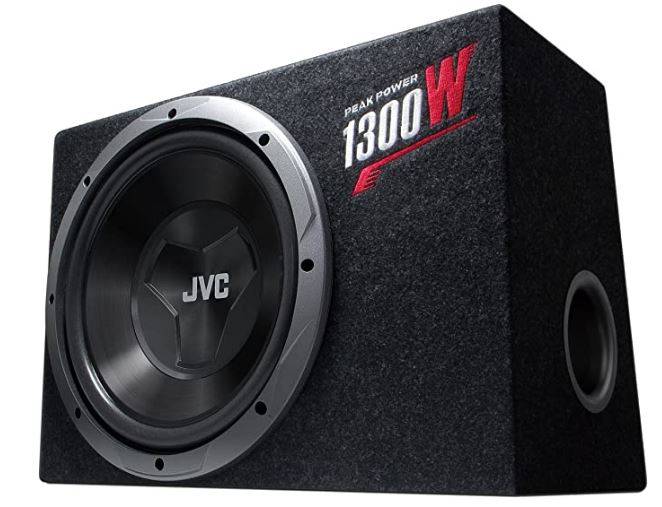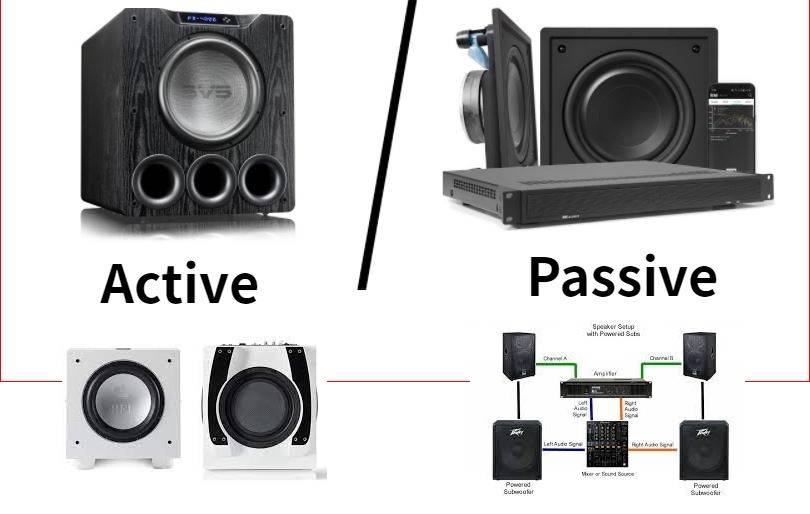A passive subwoofer is a loudspeaker that does not need an external amplifier. Simply connect to your integrated receiver or amplifier using speaker cable and you’re ready to go!
Passive subwoofer: Best sellers and current offers
JVC CS-BW120 300mm Subwoofer Kit

Frequently Asked Questions
What types of the passive subwoofers are there and what determines a good product?
There are two types of passive subwoofers, those with a built-in amplifier and those without. Those with built-in amplifiers can be connected to any type of receiver or preamp/processor via speaker-level inputs (LFE). Those without an internal amplifier should be connected directly to your AV receiver’s subwoofer output terminals using line-level cables.
The quality of the passive subwoofer is determined by its ability to reproduce low frequencies accurately and clearly. A good passive subwoofer will be able to produce a tight, clean bass sound that blends well with your main speakers without overloading them or sounding muddy.
It should also have an extended frequency range to be able to accurately reproduce the lower notes than most subwoofers in its price range (typically around 30Hz). If you’re looking for a high-quality subwoofer at an affordable price, we recommend checking out our list of the best budget active subwoofers.
Who should use a passive subwoofer?
If you have a small room or apartment and don’t want to disturb your neighbors? then a passive subwoofer is for you.
Based on what criteria should you buy a passive subwoofer?
The first thing to consider is the size of your room. If it’s a small space, there’s little point in buying an expensive subwoofer that will take up too much floor space and not provide enough bass to make a difference.
Instead, if you live in a large house or apartment with lots of open spaces where sound can freely resonate without being absorbed by walls and furniture; then go ahead and buy one that has more power than would be needed for larger rooms.
Another factor to consider is whether or not you want wireless, as this could save you some installation costs, as well as give you more flexibility when it comes to placing your speakers in your home theater setup, or any other place where they are needed.
Finally, think about the volume you need. Do you have neighbors who complain every time someone turns up the volume on their TV even a little higher than normal? Then get one that has great noise reduction capabilities so that no matter how loud the volume is, no one outside your home hears anything but the crystal-clear audio coming from inside.
What advantages and disadvantages does a passive subwoofer have?
Advantage
The advantages of a passive subwoofer are that you can use any amplifier to drive it. You don’t need an expensive, high-power amplifier for your subwoofers if you use the passive version. This makes them very affordable and easy to install in almost any vehicle or home theater system.
Disadvantages
The disadvantages are that it will not be able to produce the same level of bass as an active subwoofer. It also requires more space due to its larger size and power requirements, which may make it unsuitable for small rooms or apartments.
When you go to buy a passive subwoofer, it is important that you look at the power handling capacity. This will tell you how much power your subwoofer can deliver and therefore determine its performance. Another thing to consider when choosing a passive subwoofer is whether or not it has a built-in amplifier.
Or if you have to buy one separately. If an amplifier isn’t included with the speaker, make sure you buy one too. Because without amplification, these types of subwoofers don’t produce any sound.





